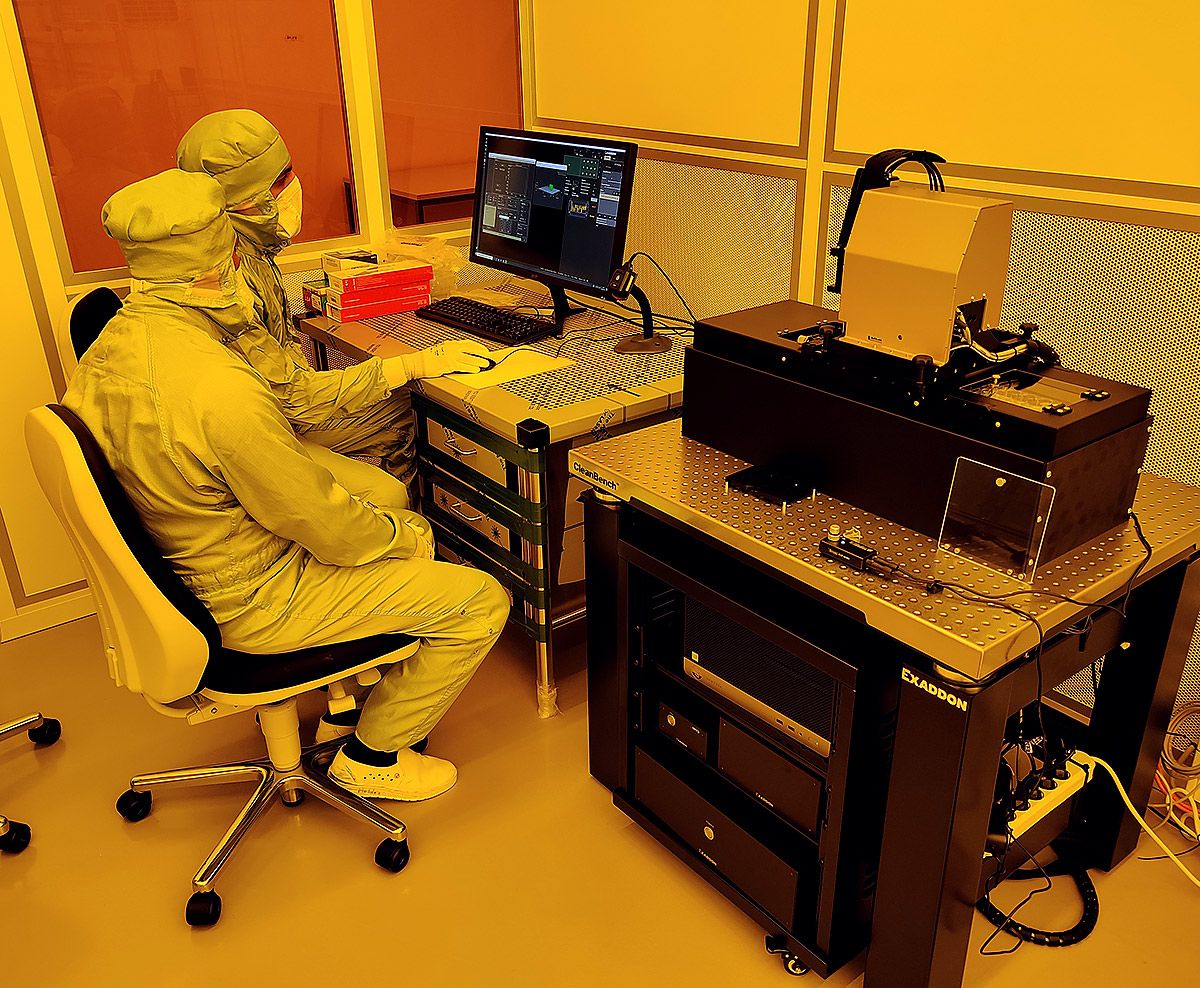After collaborating with preeminent high frequency researcher Professor Viktor Krozer in various projects since 2018, we are delighted to announce the renowned Ferdinand-Braun-Institut gGmbH, Leibniz-Institut für Höchstfrequenztechnik (Institute for High Frequency Technology), as the latest institution to acquire one of our cutting-edge CERES µAM print systems. Lead by Prof. Wolfgang Heinrich, the FBH microwave department and its III-V electronic labs have been involved in key research relating to millimeter waves and THz components for communications and radar.
An authority in the field, the THz project leader Prof. Viktor Krozer occupies prominent roles within high frequency communication research at both the Goethe Universität Frankfurt/Main and FBH Berlin. Exaddon’s CERES system has played a key role in enabling the printing of various components integral to the research. One example we revealed last year; 3D printed TWT (traveling wave tube) components designed to amplify radio frequency signals which fall within the frequency range 300 MHz – 300 GHz. These TWTs are crucial to boost signal strength, and were uniquely manufactured with the CERES system.
Late September 2021 saw Exaddon Product Manager Dr Paolo Testa spending five days at the FBH. Dr Testa was visiting to both install the CERES system and train the FBH staff in its operation.
The microscale AM system takes its place within FBH’s brand new 1000 m2 cleanroom dedicated to III-V electronics and optoelectronics research. Accordingly, all installation and training procedures had to be conducted in appropriate cleanroom uniforms, with all materials scrupulously checked. While CERES does not require such an environment for operation, it forms part of FBH’s apparatus for semiconductor fabrication, and thus was included in their specific cleanroom.
 Pictured are Dr Hady Yacoub, Head of InP device lab at FBH, and Dr Nripendra Halder, postdoctoral research associate at FBH.
Pictured are Dr Hady Yacoub, Head of InP device lab at FBH, and Dr Nripendra Halder, postdoctoral research associate at FBH. Additionally, FBH was recently announced as a partner institution in the 6G Research and Innovation Cluster (6G-RIC) - a German federal initiative which aims to investigate develop “mobile communication systems with open interfaces across all technology frontiers”. As part of this project, FBH will “contribute hardware components for the new frequency bands beyond 100 GHz”.
Accessing such frequency bands is a technical challenge, and one which necessitates novel approaches. It is very exciting that an Industry 4.0 technology such as Exaddon’s microscale additive manufacturing will be used to solve another Industry 4.0 challenge; developing 6G mobile communication.
To learn more about Exaddon’s collaboration with Professor Krozer and Goethe University in the use of microscale AM for high-frequency communication, read the article here: Beyond 5G with Microscale Additive Manufacturing.
Explore microscale AM use cases: High Frequency Technologies
High Frequency Components for communication networks
CERES System Installation in FBH Berlin